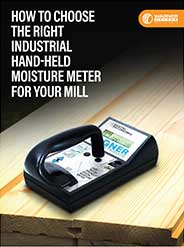Video 7 – Problems with the Hood Method
Another moisture test method is a relatively new ASTM standard that was first published in 2005. It’s generally referred to as the hood method. The method actually involves using an insulated, moisture resistant hood out of an insulating material into which we put a probe, and the hood is placed on the concrete surface. The theory being that moisture from the concrete will equilibrate in this open area within the volume of the hood, and then the probe will actually measure that amount of moisture. The idea being that this test would simulate what a floor covering sees once it’s actually placed on a floor.
The method was developed and published first as British Standard 8203, a code of practice for installation of resilient floor coverings about 20 years ago. There is also a method called British Standard 5325, which is a code of practice for installation of textile floor coverings. Both of those methods have an appendix which describes this test method. So the method has been in use in Europe and Great Britain for approximately 20 years and now exists as an ASTM standard test method, and the method is number F2420.
There are advantages and disadvantages to the test method. Number one is that you have to use a probe that’s calibrated and reliable. If it’s a new probe out of the box from the manufacturer, it’s reliable. If it’s a reusable probe, it needs to be checked within 30 days before use according to the standard.
The test also can take a very long time. The standard requires a minimum of 72 hours with the hood on the floor in order for moisture to equilibrate underneath. The British standards, on which it was based, set a minimum of 72 hours and then every day you check the moisture reading in the probe, and after it’s stabilized, you have your answer. That we found can take up to several weeks sometimes depending on the permeability of the floor. The ASTM standard actually warns that floors that have a hard troweled surface are better tested using the F2170 probes in place, in drilled holes, the in situ probes that actually go into the concrete.
The other thing to keep in mind is that the standard requires a hood that actually is not only insulated but impermeable to moisture. The reason is if it has any measurable permeability, moisture from below, from the floor, will actually permeate through the box and you’ll get false low readings.
We have found that some of the boxes that are manufactured actually have to be wrapped with a zero-perm aluminum foil and Mylar tape in order to be truly zero-perm and give you the answer according to the standard. Just something to be aware of. Check with the manufacturer and find out if the hood that you’re looking at is truly a zero-perm hood.



